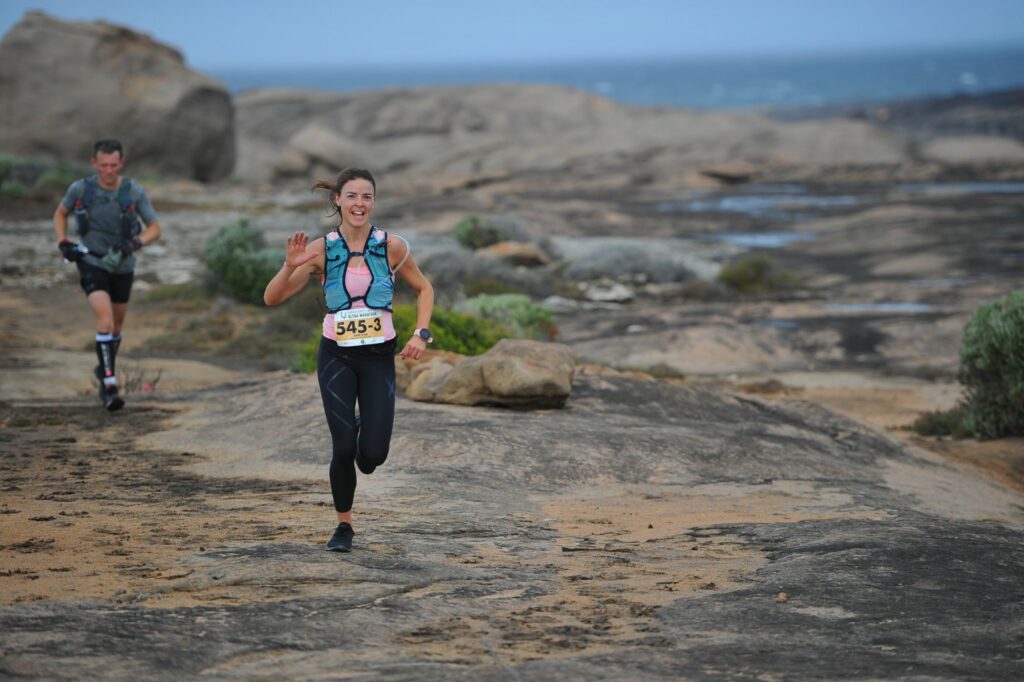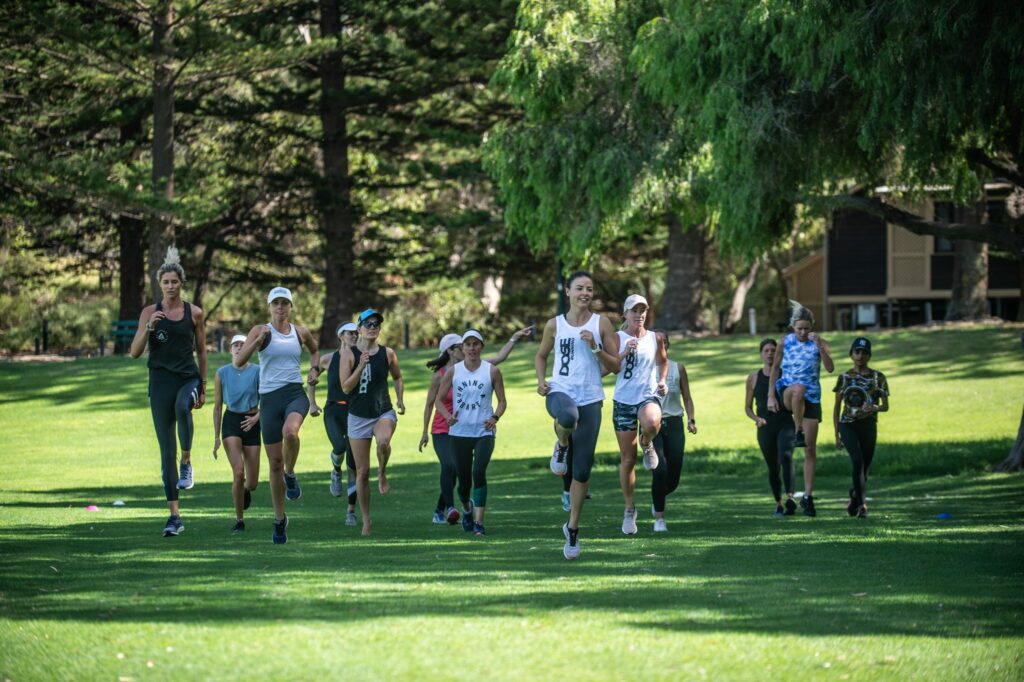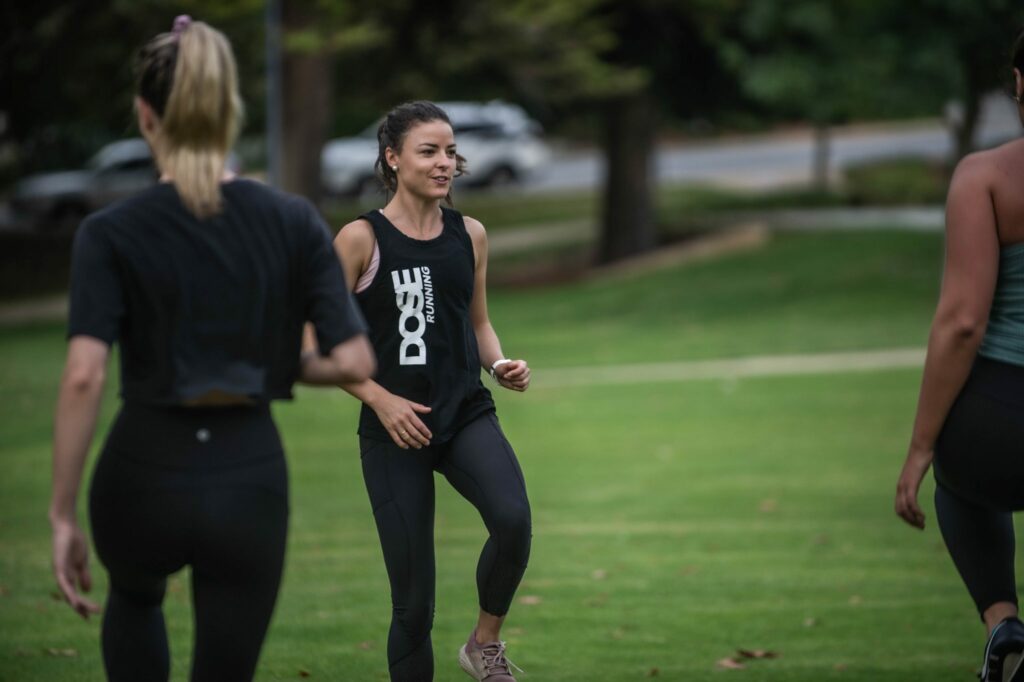
Founder of DOSE Running, Scarlett Duncan (BSc Health Science) shares 4 running facts that obliterate the common misconceptions our society has about running.
#1 MYTH: “No pain no gain”
SCIENCE: The difference between recreational versus elite athlete mentality and application of training.
#2 MYTH: “Running is bad for your knees”
SCIENCE: Recreational runners have a 300% reduced risk of developing hip & knee osteoarthritis compared with non-runners.
#3 MYTH: “Cushioned shoes will reduce your risk of injury”
SCIENCE: Increasing shoe cushioning does not decrease the peak impact load
#4 MYTH: “If you walk during a run, or skip a session on your program you are weak”
SCIENCE: Instead, try a structured run-walk approach, that way you’re not training your mind to stop when the going gets tough.
Each fact is supported by scientific evidence, so runners and non-runners alike can squash common misconceptions, and enjoy lacing up.
#1
The most common difference between recreational runners and elite runners is going to surprise you. Elite runners spend a lot more of their training time at low intensity, in their aerobic zone. Recreational runners spend a higher proportion of their training time in a threshold zone, which is much more stressful on the body, and requires more recovery time.
I encourage my adult recreational runners to replace distance with duration. For example, instead of rushing through that 5km, run for 35 minutes. Allow yourself to run less or more distance based on your perceived level of exhaustion; if you are stressed at work or didn’t sleep well, it’s likely you’ll cover slightly less distance than when you’re feeling well and energetic. Try running at a pace for which you could hold a light conversation. If you lose the ability to do so, you’re more than likely working too hard.
If you run three times a week, make two runs comfortable (like the pro’s) and make one run a ‘quality’ session, such as doing intervals at a higher effort, with frequent structured rest.
If you had to re-read the words ‘running’ and ‘comfortable’, (and are questioning if that will ever be possible to achieve), then a structured run walk approach could be a game changer. With the bulk of your runs being at low intensity, you now have the capacity to execute and benefit from a high-quality, high intensity session.
This approach was observed and then scientifically proven by Dr Stephen Seiler, world renowned exercise physiologist working with elite endurance athletes. Since then, his findings have been further supported by numerous researchers.
Seiler, S. (2010). What is Best Practice for Training Intensity and Duration Distribution in Endurance Athletes? International Journal of Sports Physiology and Performance, 5(3), 276-291.
#2
So next time someone expresses concern about their knees, or discourages you from running, tell them that! 300%!!!
Cartilage adapts and gets stronger and more tolerant to load with running. That said, if you do experience patellofemoral pain, commonly referred to as ‘knee cap pain’ or ironically ‘runner’s knee’, and the pain doesn’t dissipate within an hour or two following your run, reducing your load would be the best place to start. That might even be breaking up your 30 minute run into two, fifteen-minute runs.
Other factors to consider might be cumulative load effects, running gait, footwear, and strength training. So, making an appointment to see a sports physio or running coach, and ideally having those two correspond to get you the best outcome is encouraged.
All my athletes, be it attending group sessions or following an online personal program, are guided through modifications as appropriate. No matter how sound a program is, everybody has a different capacity to adapt, therefor training programs shouldn’t be set in stone.
One of the benefits of having a coach is that they can modify your training so that you’re not attempting a load that is beyond your capacity to adapt at that point in time, and that they can safely alter your training load before training results in an injury.
Beer, B. (Host). (2020 July) The Physical Performance Show ft Escuilier, JF. https://www.pogophysio.com.au/blog/jf-esculier/
#3
If you’re hoping that an expensive pair of running shoes is going to solve any injury issues you’re experiencing, I hate to burst your bubble, but training load, recovery, running technique, strength, mobility and conditioning all place higher in importance.
Prescribing running shoes based on foot type doesn’t have any solid evidence. It’s also worth noting that salespeople might have good intentions, but they most likely don’t have the evidence to support their recommendations, which are often based on anecdote, beliefs, or other factors such as how much stock they have.
I recommend trusting what feels comfortable to you. If changing shoes, don’t do anything drastic (i.e. high support to a minimalist shoe) and if you do, allow your body time to adapt to the change of load. Perform some single leg exercises in store and see if you can keep your balance, and slowly introduce your new shoes into more and more of your runs. That way if the shoe does change where the load travels through your body, you give your body an opportunity to adapt to the change in load.
Kulmala, JP., Kosonen, J., Nurminen, J. et al. Running in highly cushioned shoes increases leg stiffness and amplifies impact loading. Sci Rep 8,17496 (2018).
#4
There is a fine balance between being disciplined and following your intuition (factors to consider include energy levels, stress, sleep, overall load, pain, heat etc). This goes for both skipping a session or walking during a session.
I’m a huge advocate of the run-walk approach, especially for those learning or returning to running. We’ve already touched on the benefits of low intensity running, and if keeping the heart rate down means incorporating walking, then here’s a brief guide:
| Week | Run | Walk | Total Duration |
|---|---|---|---|
| 1-2 | 1 minute | 1 minute | 20 minutes |
| 3-4 | 2 minutes | 1 minute | |
| 5-6 | 2 minutes | 30 seconds | |
| 7-8 | 3 minutes | 1 minute |
Basic progression for beginner runners.
The common theme among the 4 misconceptions touched on above is load, and some of the ways load can vary. In this instance I’ve highlighted intensity, volume and impact. Overloading can be singular or multifactorial and is unique to the individual. Everyone adapts and responds to load differently, which is why working with a running coach can be so valuable.
If you have any questions, or are interested in a personal program (in-person or online with coach access & support), you can get in touch with me directly at scarlett@doserunning.com.au. I am passionate about working with runners of all abilities, from those learning to run right through to your ultra-marathoner, and helped thousands of runners achieve their personal goals.
Scarlett Duncan
BSc Preventative Health Specialising in Exercise and Sport Science
Founder of DOSE Running
Ultramarathoner
Passionate coach 10+ year’s experience/ 2 years full time
Background in Public Health Research
DOPAMINE | OXYTOCIN | SEROTONIN | ENDORPHINS
“when we run, our spirits fly


